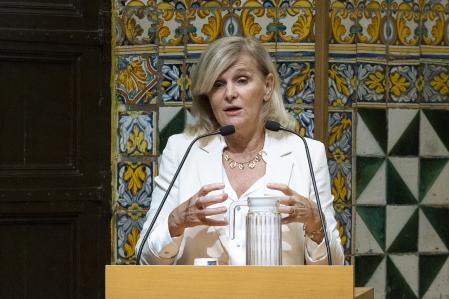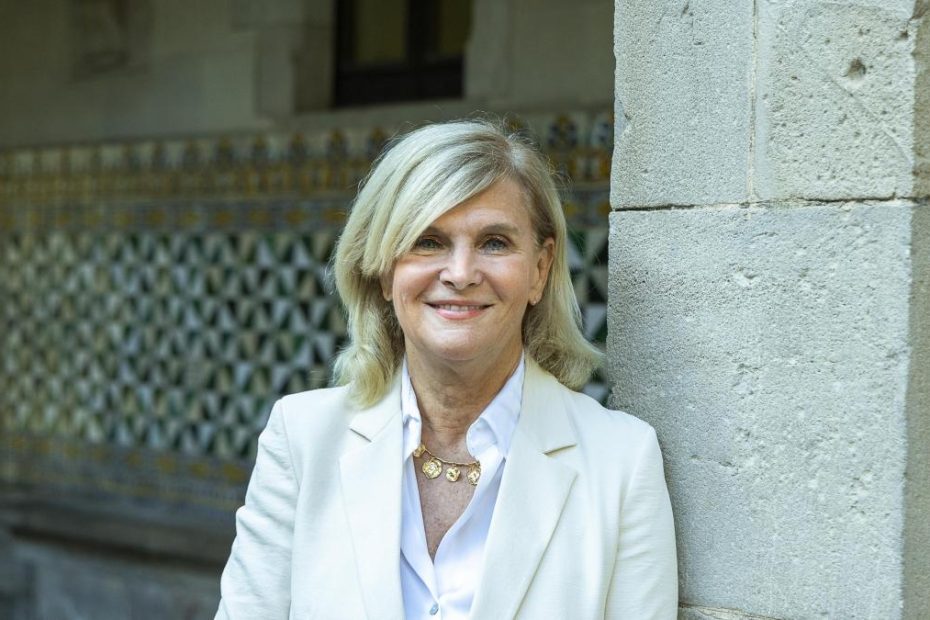


“We have always considered climate change to be a health crisis. This close link between climate change, health and diseases is becoming increasingly clear,” explains María Neira (La Felguera, Asturias, 1962), director of the Department of Public Health and Environment of the WHO. Neira participated yesterday in a conference organized by the Institució Catalana d’Estudis Agraris i Acadèmia de Ciències Veterinàries de Catalunya. “Implementing solutions to reduce gas emissions are also recommendations that we would make in a public health plan,” he adds.
What diseases are the WHO most concerned about?
Above all, those transmitted by vectors. We are seeing cases of malaria where we did not see them before, such as dengue in Southeast Asia, which could increase prevalence by 30%. Or diseases caused by water, diarrhea, cholera, or derived from difficulties in accessing drinking water, or drought, as well as massive displacements of people, malnutrition problems due to the impossibility of cultivating crops due to natural phenomena, or waves. of heat.
When pedestrian zones closed to traffic began to be created, controversy was also generated. And now no one would put cars in a pedestrian zone

A sign warns of the ZBE in Barcelona’s Ronda de Dalt
Air pollution and climate change have a common genesis.
In 75%, the causes of climate change are the same as those that cause air pollution. And that is 7 million deaths annually. For us, climate change and pollution is a common front. And added to that is plastic or water pollution.
The root is the same…
We must go to the root of the energy sources we use, which must be as clean as possible, consider the management of ecosystems so that they protect us and good management of cities is also key. And that means getting the planning right that we are going to put in place.
Are you in favor of introducing low emission zones in cities?
Of course. In fact, we have worked with the mayor of London, who has received a lot of criticism for the implementation of these low emission zones. Low emission zones have been shown to provide a health benefit.
However, in Spain this measure was included in the Climate Change Law (2021), and many municipalities have declared rebellion and do not apply them.
The more citizens understand the need to preserve the health of their lungs and their health in general, the more they will ask for low-emission zones. Many years ago, when pedestrian zones closed to traffic began to be created so that people could walk, controversy also arose. And now no one would put cars in a pedestrian zone.
Mayors can be powerful Ministers of Health: they have the capacity to intervene to benefit the health of the population

María Neira offered a conference in Barcelona organized by the Catalan Institute of Agrarian Studies and Academy of Veterinary Sciences.
What air pollutants are you most concerned about?
Ultrafine solid particles, PM 2.5, ozone and NO₂, especially due to traffic and the type of energy we use.
What other recommendations would cities make at this point?
Mayors are increasingly aware of air pollution. They have powers and can take action in transport and urban planning. But sometimes they complain that government decisions are needed that they cannot make directly. They can be powerful Ministers of Health, because they have in their hands intervention capabilities that can benefit the health of the population. And if we can measure that resource management in terms of health benefits, they will have more votes too.
What message will the WHO give at the UN climate change conference in November in Baku, Azerbaijan?
The idea that health benefits are the big argument that can finally push climate action. The speed of climate action is not up to the magnitude of the problem. Health advocacy can be the factor that accelerates the transition towards clean fuels, towards more sustainable food production systems and towards those changes that we need in cities to reduce and prevent disease and promote health.
Zoonosis
“Without protecting the health of ecosystems we cannot preserve our own health”
How do you see the risk of new zoonotic jumps?
The more we destroy ecosystems, the easier it will be for some emerging diseases to jump that barrier and enter the human chain. We have to use our ecosystems as a protective barrier to stop them and achieve a better balance between human health and animal health. Without protecting the health of ecosystems it is absurd to pretend that we are going to survive and preserve our own health.
And the same with plastic…
The more plastic we throw into the oceans, the more weakened and vulnerable our source of nutrition and food will be. The more chemicals we put in our soils, the more dangers we will also face. We have found microplastics in the umbilical cord. Its impact on health is not fully demonstrated; but someone would have to prove otherwise.
But new contaminants are appearing that pose new risks.
We are also concerned about the problem of electronic waste. Our old computers, phones and more end up in places where they shouldn’t. Recycling laws, but they are only 17% complied with. There are mountains of garbage in some cities in the Philippines that I have visited, and where there are entire families, with their children, collecting all the waste they can, with heavy metals, to earn a couple of dollars a day. That pollution is brutal. In Africa there are impressive electronic garbage dumps.

